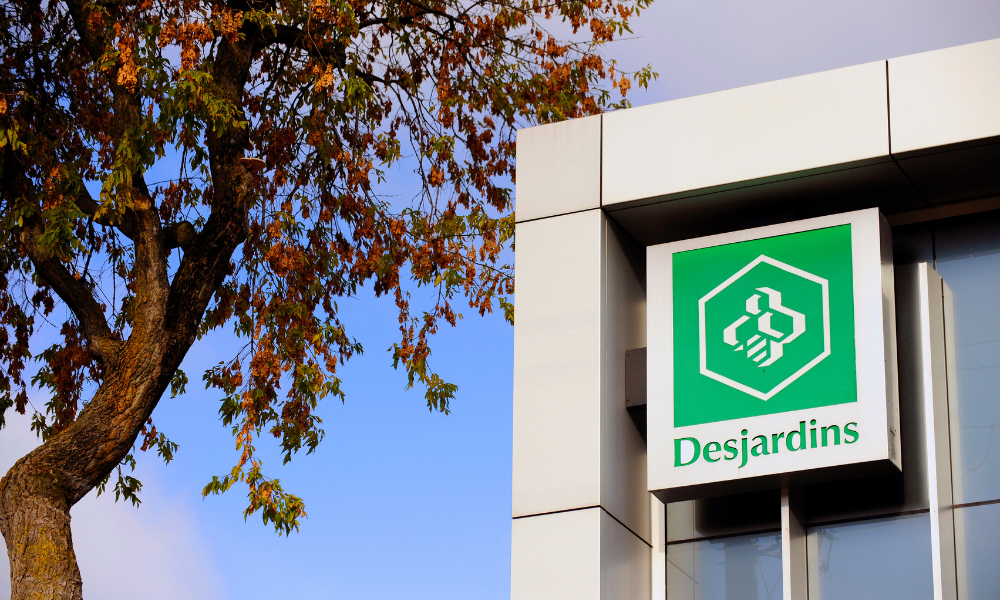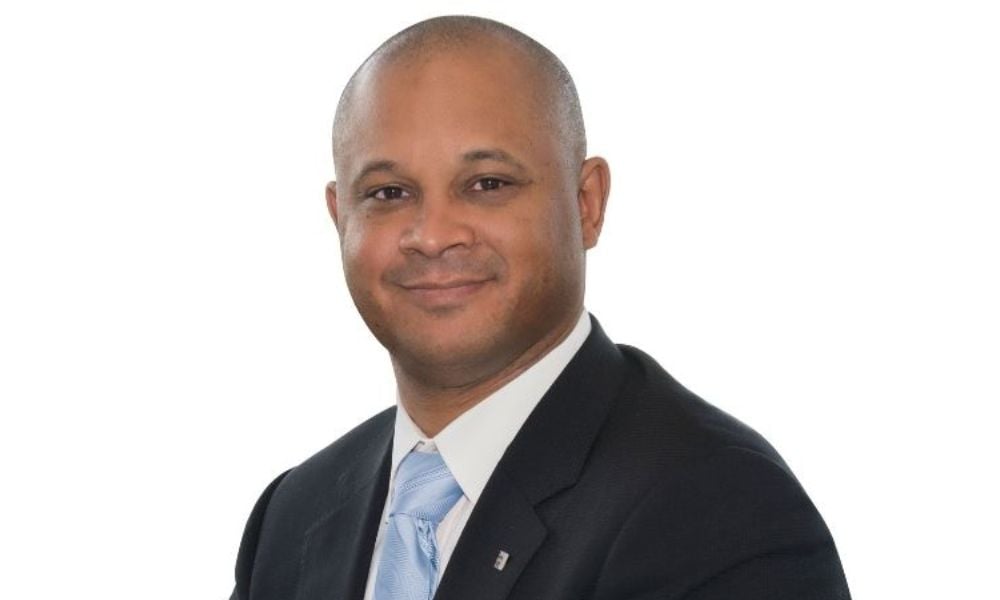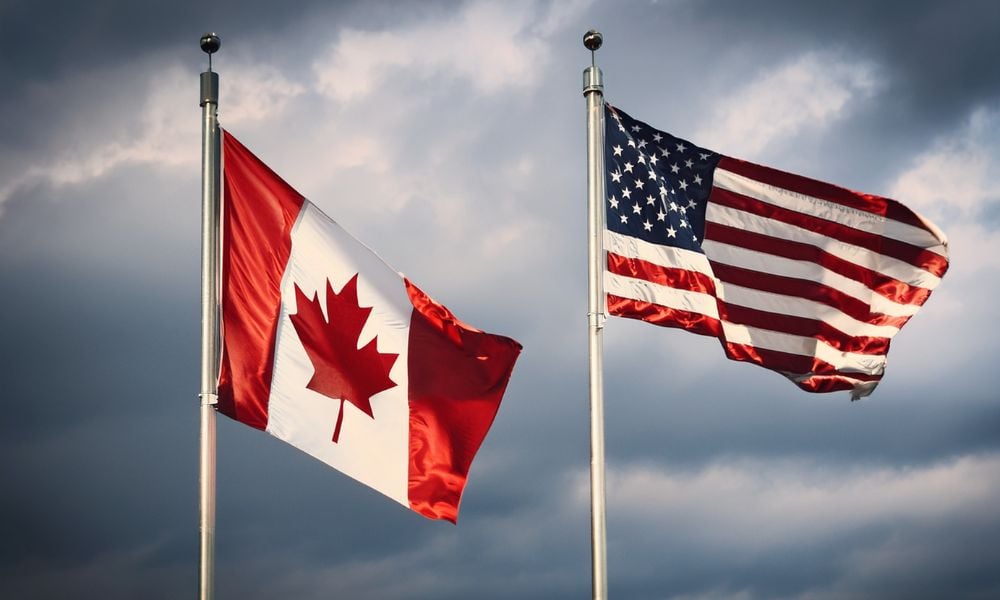Discover how a Desjardins group RRSP can support employees. Learn key features and benefits, tax advantages, and investment strategies in this guide

- How does a Desjardins group RRSP work?
- What are the investment options under Desjardins group RRSP?
- What sets a Desjardins group RRSP apart from competitors?
- How to open a Desjardins group RRSP
- What other group retirement savings plans does Desjardins offer?
- Is a Desjardins group RRSP right for your business?
Desjardins is one of the most prominent financial institutions in Canada. While it boasts a strong presence in Québec and Ontario, the cooperative’s reach spans across the country and globally.
Desjardins offers a range of products and services, including insurance, banking, and wealth management. Its clients can also access different types of retirement savings plans (RSPs) to help them secure their financial future.
Among the company’s RSP offerings are group retirement savings plans (RRSPs). Depending on your business’ needs, a group RRSP from Desjardins may be a good way to help your employees save for retirement.
In this guide, Wealth Professional will give you an overview of how a Desjardins group RRSP works. We’ll look into the features and benefits to see what sets it apart from competitors. We’ll also discuss the various investment options to give you an idea on how employees can boost their retirement savings.
If you’re considering Desjardins as a retirement savings plans provider, this article can help you make an informed decision. Keep reading to learn more about how its group RRSP can benefit your business and employees.
How does a Desjardins group RRSP work?
A Desjardins group RRSP works like other registered retirement savings plans. It is designed to help your employees build their retirement nest egg, while taking advantage of tax incentives.
A group RRSP from Desjardins is a collection of individual RRSPs offered by an employer. Just like with other RRSPs, contributions reduce taxable income, helping plan members prepare for retirement while making the most out of their tax benefits. The plan can be combined with a LIRA or locked-in RRSP, so any locked-in funds from a previous employer’s pension plan can be transferred over hassle-free.
Contributions made to group registered retirement savings plans are tax-deductible. This means that the investments grow on a tax-deferred basis until the funds are withdrawn, often in retirement. During this time, the employee is likely to be in a lower tax bracket. This makes a group RRSP ideal for long-term planning.
"In addition to the group RRSP’s lower fees, compared to those typically charged in an individual RRSP, plan members can choose simple and carefully managed investment options, automate their savings through payroll deductions and enjoy immediate tax savings," said Marie-France Amyot, vice-president of group benefits and retirement savings at Desjardins.
"When eligible, tax-free withdrawals can even be made outside of retirement: they can be used to buy a property with the Home Buyer’s Plan (HBP) or go back to school with the Lifelong Learning Plan (LLP)."
She also noted that through a deferred profit-sharing plan (DPSP), employers have the option to share a portion of their company’s profits with employees through the RRSP, driving both savings and employee engagement.
Here are some factors to consider if you’re planning to offer your employees in a Desjardins group RRSP:
Contributions and contribution room
-
Employer count as salaries, which are considered taxable benefits. This means that payroll taxes, such as employment insurance, apply.
-
Contributions can be made through payroll deductions. Your employees can decide how much they want to contribute.
-
The contributions you and your employees make can’t exceed their personal RRSP contribution room. As per Canada Revenue Agency (CRA) rules, the annual limit is the lesser of 18% of their previous year’s earned income and the annual RRSP dollar limit set by the agency. For 2025, the dollar limit is $32,490. The RRSP contribution room also takes into account any unused contribution room from previous years and pension adjustment.
-
Lump-sum contributions and transfers from other retirement savings plans are allowed.
-
Employer contributions are immediately vested. This means that your employees can access them any time. However, limitation rules can be added on basic contributions.
Eligibility requirements
-
A group RRSP is available in all provinces and territories.
-
Once you have opened a group RRSP, all your employees can enroll based on the plan's eligibility rules.
-
Contribututions can be made to the plan until December 31 of the year when plan member turns 71.
Withdrawals
-
Funds can be withdrawn from an RRSP at any time, but will be considered taxable income. The withholding tax rates vary, depending on the province and amount being withdrawn.
-
An RRSP must be closed by December 31 of the year when the plan member turns 71. At this point, tthe funds must be withdrawn (subject to taxes), transferred to an income product, or used to purchase an annuity.
-
Withdrawals from a group RRSP are subject to income taxes, except when used for:
- the Home Buyers’ Plan (HBP), which lets plan members withdraw up to $60,000 per calendar year to buy or construct their first home
- the Lifelong Learning Plan (LLP), which allows plan members to borrow up to $10,000 a year to a maximum of $20,000 over four years to go back to school full-time
This guide on RRSP withdrawals can provide detailed information on the tax implications of taking out funds from your group RRSP.
Fees
Desjardins may charge fees for total or partial withdrawals from a group RRSP.
You can learn more about registered retirement savings plans in this guide on how RRSPs work.
What are the investment options under a Desjardins group RRSP?
Desjardins provides plan members two types of investment strategies to suit their risk tolerance, preferences, and investment know-how:
1. Off-the-shelf approach
This provides plan members with what Desjardins calls a lifecycle path, which is a ready-made portfolio designed to help plan members reach their retirement goals. A lifecycle path can either be predefined or personalized by the employer. Desjardins also offers target date funds based on a plan member’s planned retirement age.
Predefined lifecycle paths and target date funds
Desjardins offers various options of predefined lifecycle paths and target date funds to meet different plan sponsors’ and members' needs:
- Desjardins Progression path – based on target retirement date
- Desjardins Sustainable path – based on target retirement date and made up of responsible investment funds
- BlackRock LifePath Index – based on target retirement date funds
- Fidelity ClearPath – based on target retirement date funds (primarily active management)
- Fidelity ClearPath Institutional – based on target retirement date funds (active and passive management)
- Fidelity ClearPath Index Plus Institutional – based on target retirement date funds (primarily passive management)
BlackRock is a registered trademark of BlackRock, Inc. Used under license.
LifePath is a registered trademark of BlackRock Institutional Trust Company, N.A. Used with permission
Fidelity ClearPath is a registered trademark of FMR Corp. Used with permission.
Personalized lifecycle paths
These are based on the needs and preferences of a plan sponsor. As an employer, you can select the following features:
- lifecycle type based on age, number of years until retirement, or target retirement date
- asset allocation evolution through time
- risk profile
- underlying investments
2. Do-it-yourself approach
This suits employees who have a certain level of knowledge about investing and prefer a more hands-on approach. Your investment-savvy staff can choose either:
Progression funds
These are designed for employees who have some investment know-how but want to leave the fund selection to Desjardins experts.
À la carte funds
These are for employees who want to create their own portfolio. They can take advantage of the different investment options available. These include:
- balanced funds
- fixed-income funds
- Canadian equity funds
- foreign equity funds
- specialty funds
These funds are designed to match different management styles and asset classes. Here’s a list of investment options qualified for a Desjardins group RRSP.
"Desjardins Insurance’s investment solutions are diversified, competitive, and innovative," Amyot said. "They are designed both to meet the business needs of clients and help plan members to reach their savings and retirement goals. A thorough governance process behind the investment platform demonstrates a commitment to offer clients a range of high-quality investment options."
If you’re aspiring to become an investor but don’t know where to start, this guide on how to start investing can prove useful.
What sets a Desjardins group RRSP apart from competitors?
Amyot noted that the firm's tools and resources designed to help members make informed financial decisions are among the biggest factors that make the firm's group RRSP stand out.
"Desjardins offers simple, user-friendly services to help plan members better understand their retirement savings and feel more financially empowered," she explained. "These services include a retirement goal tracker, educational webinars, one-on-one sessions with licensed agents, and a wellness centre with tips and tools to support plan members in setting financial goals and building their confidence.
"Plan sponsors can work with reputable and experienced investment fund managers to build a customized investment lineup suited to their business, while an engagement tracker and intuitive administrator website simplify plan administration."
Another factor that sets a Desjardins group RRSP apart from others is its responsible investment options. The firm considered a set of environmental, social and governance (ESG) criteria to find investments committed to a sustainable and equitable economy.
Employees have three options:
1. Desjardins Sustainable Target Retirement Date Path
This is a ready-made portfolio consisting of responsible investments chosen based on certain criteria, including the plan member's age and target retirement date. The asset allocation transitions gradually to fixed income over time but speeds up as retirement approaches.
2. Desjardins Sustainable Target Risk Funds
This portfolio consists of five funds focused on a target risk level in line with a plan member’s risk tolerance. These are:
- Desjardins Sustainable Secure Fund
- Desjardins Sustainable Moderate Fund
- Desjardins Sustainable Balanced Fund
- Desjardins Sustainable Growth Fund
- Desjardins Sustainable Aggressive Fund
These funds are rebalanced automatically, allowing investors to be on track relative to their risk objectives.
3. À La Carte Funds
Plan members create their own investment portfolio by choosing funds that align with their personal values. In this DIY approach, they are responsible for adjusting their portfolio over time to ensure that it continues to match their investment strategy and financial situation.
Here are the options:
- Desjardins Sustainable Fixed Income Fund
- Desjardins Sustainable Equity Fund
- Desjardins Sustainable Environmental Bond Fund (Mirova)
- Desjardins Sustainable Cleantech Equity Fund (Impax)
- Desjardins Sustainable Positive Change Fund (Baillie Gifford)
You can find the full details of these funds on the Desjardins thoughtful investments page.
How to open a Desjardins group RRSP
Contact these numbers to set up a group RRSP:
- Montréal: 1-800-363-3072
- Québec City: 1-877-828-7800
If you need help with an existing plan, the number to call is 1-888-510-4762.
Once the group RRSP is set up, the website allows the plan sponsor to:
- manage plan participation, including adding or terminating plan members, or changing their personal information
- access plan member account information
- make contribution remittances online
- access plan management reports
- review information about investments, governance, and legal requirements
Your employees would have access to the plan member website where they can enrol online.
What other group retirement savings plans does Desjardins offer?
Apart from group RRSPs, Desjardins offers a range of retirement savings plans designed to meet the needs of different businesses and their employees:
-
Tax-free savings account (TFSA): This was created to provide a means for anyone 18 and older to set money aside tax-free throughout their lifetime. Learn more about the difference between RRSPs and TFSAs in this guide.
-
Deferred profit sharing plan (DPSP): This allows an employer to distribute a portion of profits to employees. Employees aren’t allowed to contribute to the plan.
-
Defined contribution pension plan (DCPP): The employer and their employees make contributions that accumulate on a tax-deferred basis and that are generally locked-in. Employees' contributions are tax-deductible.
-
Voluntary retirement savings plan: This is a type of defined contribution group retirement savings plan designed for Québec employees without access to a group pension plan. It works almost exactly like the pooled registered pension plan offered in other provinces.
-
Simplified pension plan (SPP): Available only in Québec, this type of defined contribution pension plan is set up on behalf of an employer and administered by a financial institution. Employers are required to contribute, but their contributions remain locked in. Employee contributions, on the other hand, can be withdrawn at any time if they are non-locked-in based on plan rules determined by the employer.
Wondering about the difference between RSPs and RRSPs? This guide has the answers.
Is a Desjardins group RRSP right for your business?
To help you determine whether a group registered retirement pension plan suits your business, Desjardins created a table that compares the different group plans side-by-side.

“Supporting the wellbeing of our communities is our priority," Amyot said. "We offer responsible investment options, helpful educational tools and caring support to help plan members make investment decisions that align not only with their goals, but with their values. Quality and innovation are behind everything we do to support the needs of our plan members and give back to them.”
Visit our Retirement Planning News Section for more tips and strategies on how to maximize your group RRSP. Be sure to bookmark this page to access breaking news and the latest industry updates.
Related Articles:
Canada Life RRSP: everything employers and employees need to know



